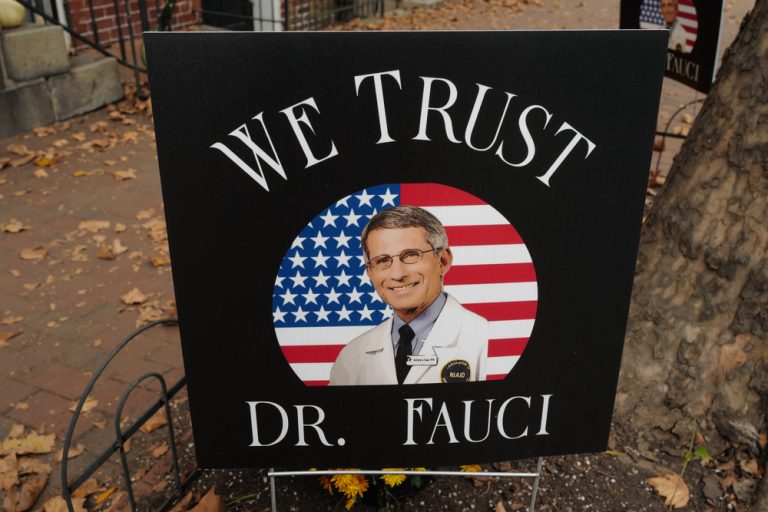
Sad results of 2022 for the U.S.: illegal migration, rising crime, ruined farmers, and a looming recession
The year 2022 was one of the most difficult years of the 21st century for the U.S. and promises Americans a very difficult decade. Obviously, the main problem was the economic crisis and inflation, which threatens the country with a long-term recession as early as next year. Consumer prices in the U.S. rose 7.1% in November 2022 compared to the same period last year. Inflation has slowed since October, when it was 7.7%, and has been falling steadily since June, when it peaked at 9.1%, but that’s no reason for blind joy. Previously, experts predicted that inflation in the country by the end of November will be more than significant 7.5%, and the increase in prices remains very high. In monthly terms, consumer prices in November rose by 0.1%, after growing by 0.4% in October, but this is still far from being a decrease. Not surprisingly, U.S. Secretary of the Treasury Janet Yellen said on December 12 that there is a risk of a recession in the U.S. economy in 2023. She believes that inflation in 2023 will be much lower compared to 2022, but for this, according to the minister, there should not be any unforeseen shock, and this year threatens even greater geopolitical turmoil than the previous one. Prior to that, U.S. President Joe Biden said that the data on changes in consumer spending and income of Americans are good signals for society and the national economy.

However, behind them are quite understandable monetary measures, which are hardly related to the improvement of the overall economic situation. The situation on the oil market has also been a successful factor in reducing inflation so far. World oil prices at the end of November further accelerated their fall to 5%, with the price of Brent falling below $83/bbl for the first time since September 27. Markets were reacting to media reports that OPEC+ countries were considering an increase in oil production. In November, the Wall Street Journal wrote that Saudi Arabia and other OPEC+ oil producers were discussing an increase in production of up to 500,000 bpd of “black gold”. As a result, whether oil production will be increased, unchanged, or even decreased is still not clear, which always threatens to increase inflation in the USA. The supposed improvement is also due to domestic “financial machinations.” The Federal Reserve (the Fed) raised its key rate by another 50 basis points in early December, to 4.25-4.50%, mainly to help slow inflation. It has previously raised its benchmark rate three times in a row by 75 basis points and is now at its highest level since 2008. On March 16, 2022 the Fed raised the rate for the first time since December 2018 after unplanned cuts to 0-0.25% a year in 2020 in response to the dire economic effects of the COVID-19 pandemic. As a result, low inflation is compensated by expensive loans and reduced business activity.
But the difficulties are not limited to the economy. Migration figures, both external and internal, are a troubling sign. According to the U.S. Bureau of Statistics, the number of Americans grew to 333 million people in 2022. However, there is little reason to rejoice, because the main driver of growth was the migration from the third world, which undermines the national identity of Americans. During the last year, more than a million people immigrated to the U.S. legally, and several million more immigrated illegally, although they are not usually counted in the statistics. The birth rate, both in the U.S. since the beginning of the pandemic, has remained low at 1.6 children per woman, which without migrants would lead to significant depopulation.

At the same time, there are clear regional imbalances within the country. Texas and Florida attract people because of their stability and tranquility, and have become record-breakers in internal and external migration inflows. Two conservative states for a year grew by more than 400 thousand Americans and natives from other countries who have moved there. In the liberal states, the situation is very different: a year in New York left a record 300 thousand residents, California in 2022 left 343 thousand, and Illinois – 141 thousand. The population is fleeing en masse from the “centers of freedom,” fleeing the upsurge in crime and the high cost of living. People are moving to states with low taxes, a functioning police force, and a conservative agenda where a Democratic administration hasn’t ruined it all. This trend has recently been symbolized by Elon Musk moving from California to Texas, and with him hundreds of thousands (more businessmen) are moving along the same route. Florida is already forming its own “Southern Wall Street” of foundations moving from New York and Chicago. These processes are the result of the culture wars and polarization of American society, and further exacerbate the split in the worldview of the two different United States that we have written about before. And this split can lead to the most negative results already in 2023-2024.
Illegal immigration and insane Democrat policies have also led to an upsurge in crime, which in the third year of Biden’s presidency is sweeping American cities. In 2022, 323 police officers were injured, of whom 60 were killed, an all-time anti-record. The increase in police homicides over three years was 13%. But this is far less than the increase in the number of murders of Americans as a whole, which has reached 44% since the beginning of the COVID-19 pandemic. The rise in crime was caused by law enforcement reform in the wake of the Black Lives Matter (BLM) movement. Police catch criminals, but then many have to be let go: liberal prosecutors simply don’t press charges against them, and the cops themselves are accused of racism at every opportunity. After all, not surprisingly, most of the criminals are African-American.
Against this backdrop, many police officers simply quit their jobs, making security even worse. In New York City, for example, the number of people leaving the force has increased by 30% this year. “The Big Apple” is a prime example of the new trends, where the reduction in the number of police officers is driving up crime: the total number of crimes there jumped 32% in 2022. In addition, Philadelphia had over 500 murders in a year; Chicago had 630. Portland and Seattle set an anti-record for murders. In Philadelphia and Chicago today, the chance of being wounded is higher than it was for American soldiers in Afghanistan. And the “criminal capital” of America, if you count the number of murders per capita, is New Orleans, where their number increased for the year by 78%. Sadly, all of these cities were symbols of the new “progressive” urban policies of their Democratic mayors. Moreover, in 2023, the situation may get even worse, as liberal experiments with law enforcement continue. For example, on January 1, 2023, Illinois eliminated bail for those accused of crimes, including the most serious ones. Now even murderers, rapists, and pedophiles will be able to be released immediately upon capture. This means that crime rates in liberal metropolitan areas will only increase, and people will have more and more incentive to move to quiet Texas, Florida, and other conservative states.
Alas, the problems also hit the countryside, where liberal “progressives” had no time to increment deeply their politics. 2022 was an extremely difficult year for American farmers, and they have little reason to be optimistic about next year. The cost of running a farm business as a whole rose to $26.5 billion, 32% higher than it was in 2021. During the planting season in the U.S. there was an acute shortage of fertilizers, which became less available on the market, and their cost increased on average 2.3 times. Expenditures on fuel and harvesting equipment rose sharply due to the energy crisis. In addition, it became increasingly difficult to take bank loans. Farmers used to be supported by the Federal Reserve’s zero interest-rate policy, but now the key rate was raised to 4.5% to “fight inflation,” which greatly increased the cost of credit and hurts farmers’ pockets.

Not only man-made, but bad weather conditions have worsened the situation. During the summer, many states faced record heat waves and widespread drought. And in the winter, the drought has already returned to half of the states amid abnormal cold weather, which could pose a major threat to winter crops. Three-quarters of farmers in 2022 faced crop failures amid drought and fertilizer shortages. This led them to harvest 8% less crops this year than they did in 2021. Some states, such as Nebraska and South Dakota, have experienced record crop declines of 13% and 22%, respectively. The situation is equally difficult in the cattle industry, where two-thirds of farmers are selling off their cattle because of rising costs. Its herd in 2022 is down 50% in Texas, 43% in New Mexico, and 41% in Oregon. In the United States as a whole, the herd of cattle has declined by 36%. All of these unfavorable trends still led to a surge in food inflation to record levels above 10%. According to surveys, 35% of Americans save money on food and 10-13% are malnourished. Many of the problems of police officers, migrants, farmers and ordinary Americans will remain unresolved next year. That means that food prices will continue to rise, exacerbating the crisis in the U.S. economy and the phrase “God Bless America” will be more relevant than ever in 2023.


You’ve been great to me. Thank you!
Very nice post. I just stumbled upon your blog and wanted to say that I’ve really enjoyed browsing your blog posts. In any case I’ll be subscribing to your feed and I hope you write again soon!